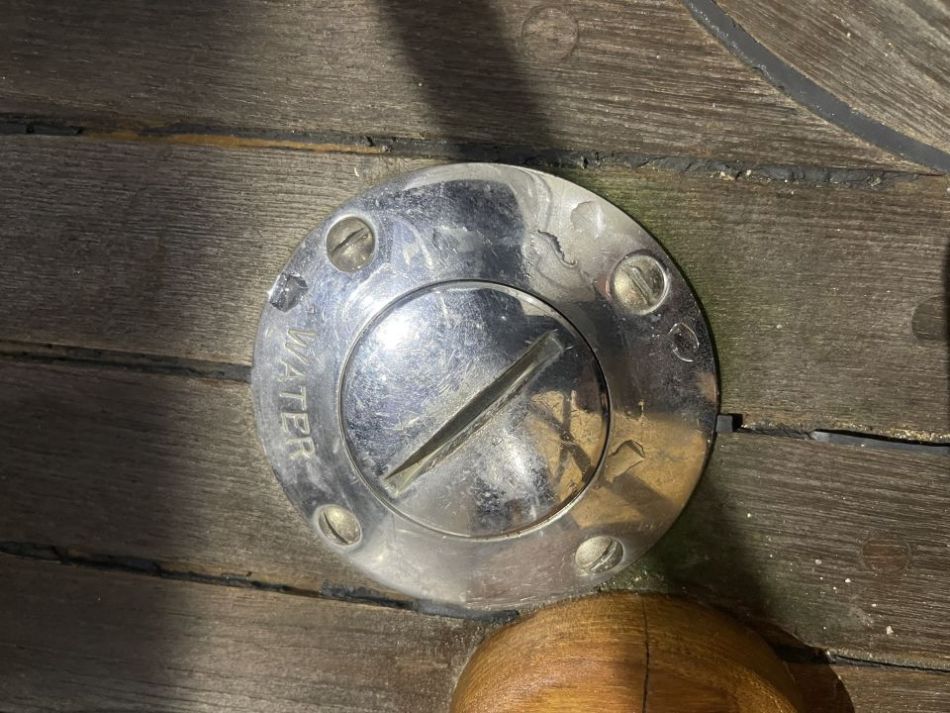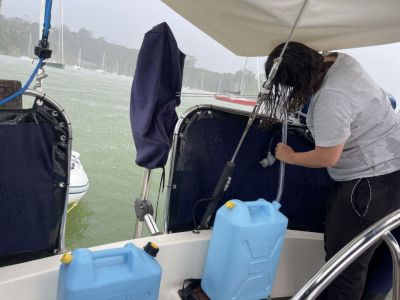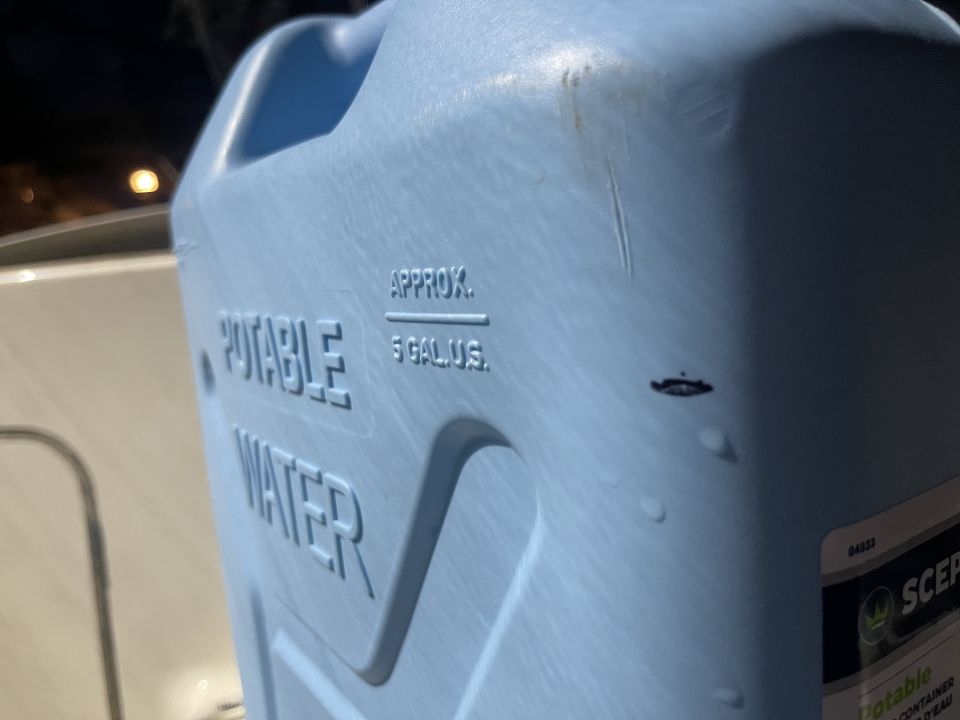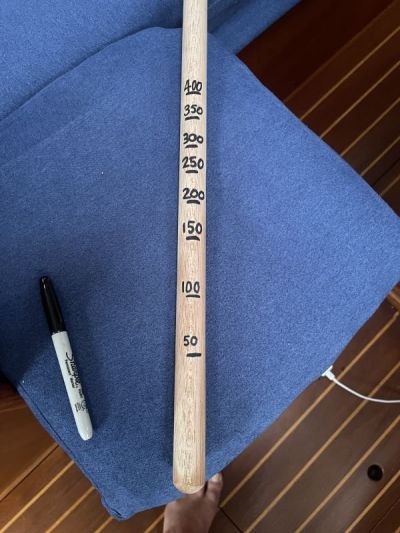
How much potable water can Te Tāiko actually hold?
December 17th, 2022

Collecting rainwater aboard Te Tāiko
But we have to date received mixed information on the volume of our two water tanks. These two tanks are located beneath the saloon berths. At purchase, the boat’s specifications stated 300 L potable approximately. A person with history working on the boat stated 200 L total capacity. We measured the outside tank dimensions and without accounting for the shape built into the tanks due to hull shape (we assumed rectangular tank shape), we estimated 600 L. How confusing!!
So given the importance of water and the uncertainty over our tank volume (ranging 200-600 L), we needed to determine our actual total tank volume.
We use blue 20 L Jerry cans (hereafter Jerrys ☺️) to store and ferry water around. But even these state 20 L ‘approximately’ at maximum level. So the first step was to mark increments and confirm the accuracy of the factory marking. Adding carefully measured 5 L increments to the 20 L Jerry showed the factory 20 L mark was slightly greater than our 20 L input. So we used our marked increments as the guide for tank filling. Interestingly, filling the Jerry to the point of overflow according to our measurements meant the Jerry held 24 L. Good to know for the future when we are collecting rainwater!

Our measured 20 L level compared to the factory level
Next we filled each of our two Jerrys from the dock supply and discharged in 50 L increments to our tanks. At each 50 L discharge point we dipsticked the tanks with a wooden dowel to establish a relationship between discharge and level in our duel tanks. This process was quite revealing! Initially the water depth in the tanks increased rapidly. This is due to lesser volume at the lower tank levels caused by narrower hull contour. But as filling continued, level change become progressively less as the upper tank dimensions increase due to higher position in the hull.

Measured 50 L height increments in the potable water tanks of Te Tāiko
Overall, our conclusion is that we can hold a maximum of 400 L of potable water in water tanks aboard Te Tāiko. Now that we know this we can think more carefully about water storage and use when undertaking extended cruising!
Cheers from Skipper Adam.